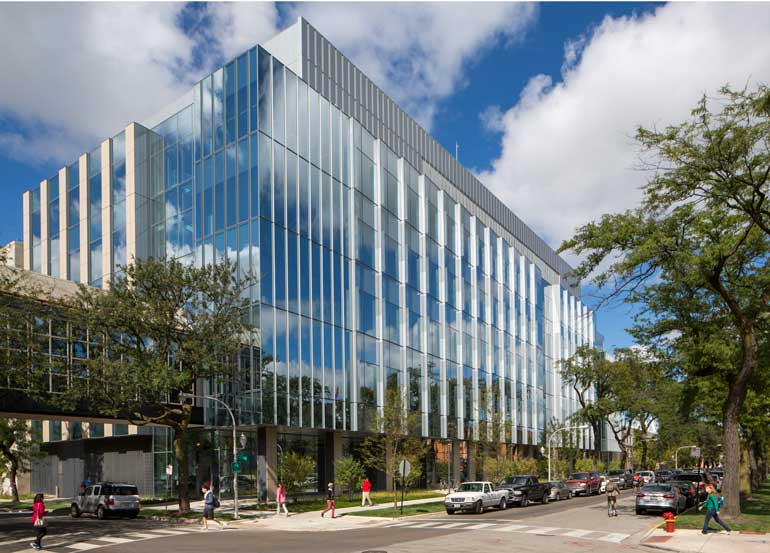A bus tour organized by the University Community Service Center (UCSC) shuttled a group of University students on Saturday morning to Chicago Lawn, a neighborhood in southwest Chicago that was formerly the site of turbulent race relations but is now home to a changing and diverse demographic.
Students toured Chicago Lawn—which stretches roughly from 57th Street to 67th Street and is bordered by South Kedzie Avenue on the east and South Central Park Avenue on the west—to learn about the neighborhood’s history, from the 1966 assault on Martin Luther King, Jr. in Marquette Park to the subsequent establishment of the Nazi headquarters and Ku Klux Klan presence.
The first stop on the tour was the Southwest Youth Collaborative (SWYC) Community Center, which was created in 1992 to “build community governance” and offer health services to the community, according to co-director of SWYC Jonathan Peck.
Offering after-school programs such as sports, tutoring, college, and career prep, as well as international travel programs to youth in the community, the SWYC is also the starting point for many community youth initiatives. One such initiative is Generation Y, which tackles issues such as police brutality and the policy of zero-tolerance for school-based arrests.
Peck told the tour group that in the ’90s the Chicago Lawn area underwent a shift from being a predominantly white, European-American neighborhood to one of black, Latino, and Arab-American residents.
“If you compare the census from 1990 to the census from 2000, you will see a completely different city based on race,” Peck said, adding that there is a “belt” of different races around central Chicago, which he said is primarily white. He attributed this “belt” primarily to economics and gentrification.
He flagged the disparity between median income and the price of housing as a major problem.
Peck also said “racial profiling in areas such as housing, education, and law enforcement” is “very pervasive” in Chicago.
The next stop on the tour was the Inner-City Muslim Action Network (IMAN)—a nonprofit organization concerned with providing social services to the greater community. Services include a health clinic, community organization through grassroots initiatives, the fostering of an understanding of Islam, and reaching out to the Muslim community—a recent event was the partnering of Jews and Muslims for a meal during Ramadan.
Rami Nashashibi, the executive director of IMAN and a Ph.D. student in sociology at the U of C, fielded questions ranging from the post-9/11 response to Muslims in Chicago Lawn to the demographics of the population that IMAN impacts. He said that Chicago Lawn did not experience the type of negative reaction in the wake of 9/11 that was experienced in other areas of Chicago in which Arabs were a minority.
Nashashibi said that Chicago Lawn, like many other areas in Chicago, has been impacted by a history of racism and the responses it elicited from the community, such as working class “white flight” to western and southwestern suburban areas, as well as a second response of “stay and fight.”
“For some that meant staying and fighting to preserve whiteness and for others it meant fighting for a more dignified integration of their neighborhoods and against voices of intolerance,” Nashashibi said in an interview.
“I think it’s fair to say that what makes Chicago Lawn somewhat unique today is that we have a convergence of those organized entities who have historically fought and continue to struggle in the spirit of the last response: essentially the response of struggling towards establishing a diverse, peaceful, and economically viable community,” he said. Nashashibi added that the community hosts both older organizations, such as the Greater Southwest Development Corporation, and organizations created within the last 10 years, such as IMAN and the Latino Organization of the Southwest.
After visiting IMAN, the tour stopped for Middle Eastern cuisine at The Nile Restaurant on 63rd Street and baklava from a local bakery before hopping on the bus to go to Marquette Park, the site of the August 1966 incident in which a rock was thrown at Martin Luther King, Jr.’s head during a Chicago Freedom march.
“That assault marked the beginning of two decades of neighborhood strife,” said fourth-year Kristin Greer Love, a program assistant for UCSC. “The Nazi Party of America established its headquarters in the area shortly after the August march. For nearly 22 years following this first march, civil rights activists gathered in Marquette Park on Sunday afternoons to rally against the Nazi and Ku Klux Klan violence in the neighborhood.”









